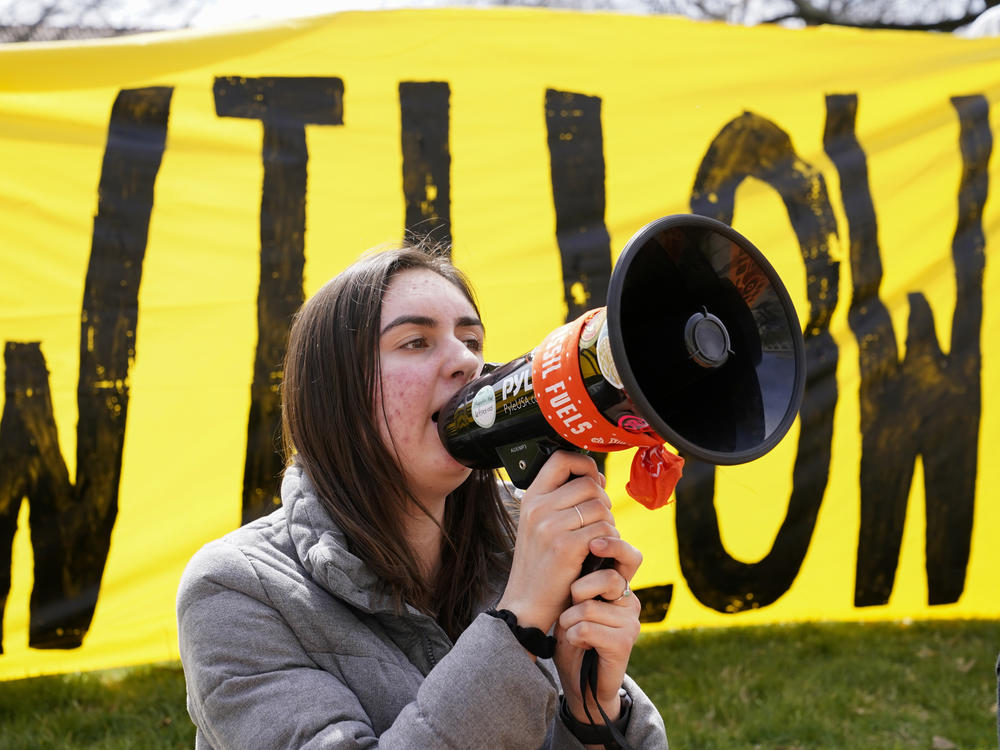Section Branding
Header Content
Judge rules Willow oil project in Alaska's Arctic can proceed
Primary Content
The massive Willow oil project on Alaska's North Slope can move forward, a federal judge in Anchorage ruled Thursday.
U.S. District Court Judge Sharon Gleason rejected the claims of environmental groups, who argued the government's decision to approve the ConocoPhillips project didn't adequately consider its contribution to climate change and potential harm to the region's threatened polar bears.
The decision removes one of the last obstacles to the project, which would be the largest oil development on federal land in decades, and has become a flashpoint for climate activists.
Environmental groups said they plan to appeal.
"[The U.S. Department of Interior's] decision to greenlight the project in the first place moved us in the opposite direction of our national climate goals, in the face of the worsening climate crisis," said Erik Grafe, an attorney with the environmental group Earthjustice, in an emailed statement.
The Willow project gained national attention earlier this year, when a campaign calling on the Biden administration to block the project went viral. On TikTok, videos tagged #StopWillow and #StoptheWillowProject attracted hundreds of millions of views. Young people, in particular, took to social media to argue that a fossil fuel project this big would boost greenhouse gas emissions and is incompatible with President Biden's commitments to tackle climate change.
ConocoPhillips has been trying to develop Willow for years. The company first received approval in 2020, during the Trump administration. But Judge Gleason tossed out those permits the next year, saying the government hadn't adequately assessed the project's potential environmental impacts.
In March, after a new round of environmental assessments, the Biden administration granted ConocoPhillips permission to go ahead with a slightly scaled-back version of the Willow project, approving three drill sites.
In its legal briefs, the company cites what it sees as the benefits of the project, including an estimated $7.6 billion in revenue for the U.S. Treasury over the life of the project, and 2,500 local jobs during construction.
ConocoPhillips also emphasized its efforts to limit the impact on the Arctic environment.
"This feat will be accomplished with a minimal footprint — a mere three drill sites — and adherence to the most stringent environmental protections in the world," ConocoPhillips' attorneys wrote.
Some Alaska Native groups joined conservationists trying to block the project, citing concerns about the impact on caribou hunting and other subsistence activities central to the region's traditional culture.
But the state's largest Alaska Native associations and major for-profit Native corporations have endorsed the project. So have most local and regional governments on Alaska's North Slope, which represent mostly Iñupiat Alaska Native communities.
Local governments would reap billions of dollars from taxes and revenue sharing if the project is built – money local officials say is needed to maintain infrastructure and social services in a region where jobs are scarce and communities are already coping with the disruptions of climate change, including thawing permafrost and shrinking sea ice.
Nagruk Harcharek leads Voice of the Arctic Iñupiat, a pro-development group. He said he's confident that with current government safeguards, Willow will not significantly harm subsistence hunting.
"Because they didn't make that decision in a vacuum," Harcharek said Wednesday. "We were very much part of that process."
The project also has the support of Alaska's political establishment, including Republican Gov. Mike Dunleavy, the state legislature and Alaska's bipartisan congressional delegation.
Grafe and other environmentalists worry the Willow project will lead to more oil development in the Arctic. The project is located in the National Petroleum Reserve in Alaska (NPR-A), a vast stretch of federal land the size of Indiana, which, despite its name, remains largely undeveloped and is important habitat for wildlife including caribou, polar bears, and millions of migratory birds.
ConocoPhillips has said it hopes Willow will serve as the hub for other projects further west in the NPR-A.
In their lawsuit, environmental groups argued oil development would damage that wildlife habitat, and said the federal government hadn't fully taken into account the amount of greenhouse gas emissions resulting from Willow — which the government estimates at 260 million metric tons.
"That's equivalent to putting two million extra cars on the road and driving them for 30 years," Grafe said.
But Gleason found the government's analysis was consistent with environmental laws, and with goals Congress established for the NPR-A.
"ConocoPhillips, as the lessee, has the right and the responsibility to fully develop its oil and gas leases in the NPR-A subject to reasonable restrictions and mitigation measures imposed by the federal government," she wrote.
ConocoPhillips says it intends to resume construction work on Dec. 21, the start of the winter construction season.
While the Willow Project is moving ahead, the Biden administration has tried to temper the anger of climate activists by taking other steps to curb oil production in the Arctic.
The administration has proposed new rules that would limit future oil and gas development in other parts of the NPR-A. It's also reconsidering whether to allow drilling to the east, in the Arctic National Wildlife Refuge, and recently canceled oil and gas leases granted during the Trump administration.
Copyright 2023 Alaska Public Media. To see more, visit Alaska Public Media.

